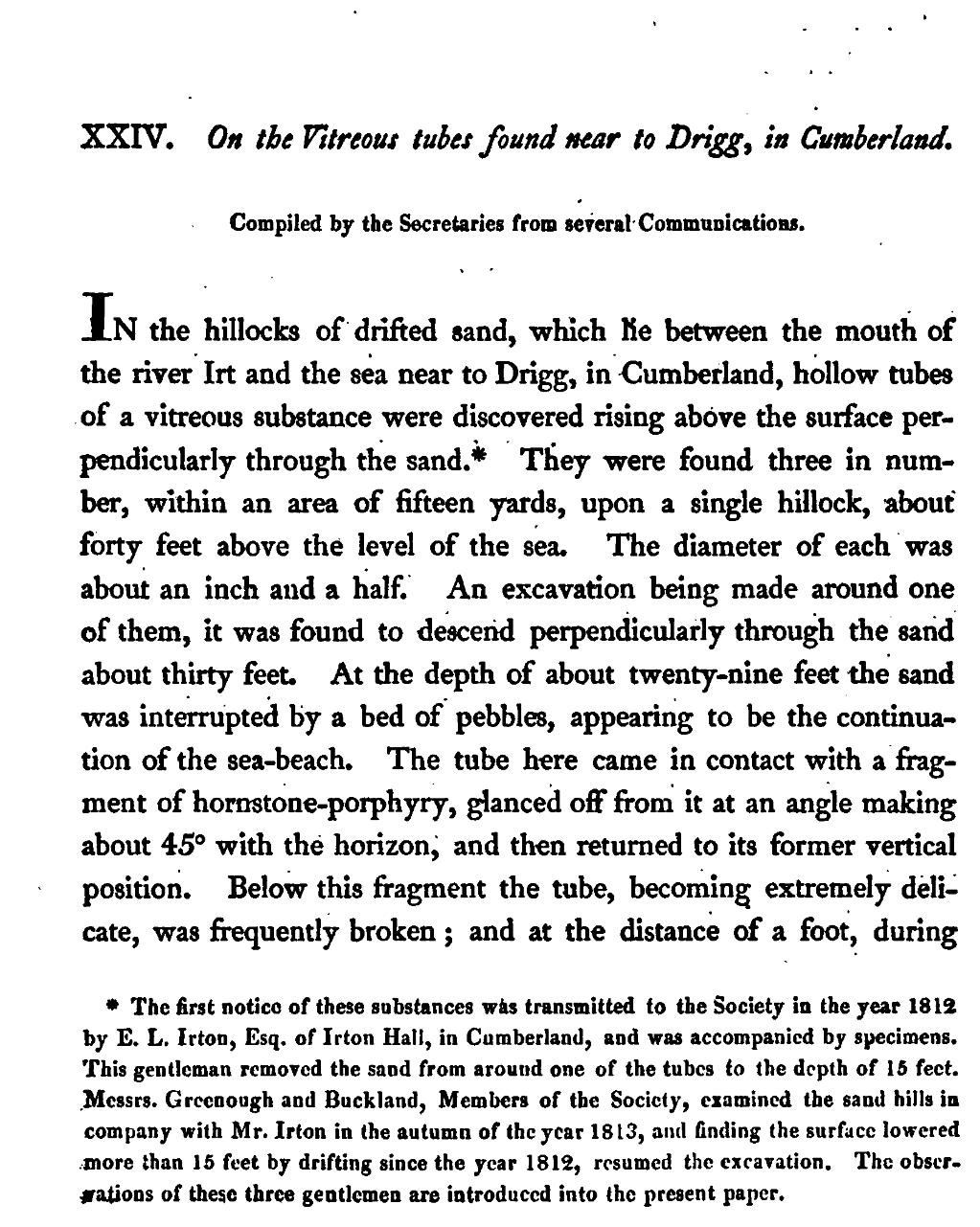XXIV. On the Vitreous tubes found near to Drigg, in Cumberland
Compiled by the Secretaries from several Communications.
IN the hillocks of drifted sand, which lie between the mouth of the river Irt and the sea near to Drigg, in Cumberland, hollow tubes of a vitreous substance were discovered rising above the surface perpendicularly through the sand.[1] They were found three in number, within an area of fifteen yards, upon a single hillock, about forty feet above the level of the sea. The diameter of each was about an inch and a half. An excavation being made around one of them, it was found to descend perpendicularly through the sand about thirty feet. At the depth of about twenty-nine feet the sand was interrupted by a bed of pebbles, appearing to be the continuation of the sea-beach. The tube here came in contact with a fragment of hornstone-porphyry, glanced off from it at an angle making about 45° with the horizon, and then returned to its former vertical position. Below this fragment the tube, becoming extremely delicate, was frequently broken; and at the distance of a foot, during
- ↑ The first notice of these substances was transmitted to the Society in the year 1812 by E. L. Irton, Esq. of Irton Hall, in Cumberland, and was accompanied by specimens. This gentleman removed the sand from around one of the tubes to the depth of 15 feet. Messrs. Greenough and Buckland, Members of the Society, examined the sand hills in company with Mr. Irton in the autumn of the year 1813, and finding the surface lowered more than 15 feet by drifting since the year 1812, resumed the excavation. The observations of these three gentlemen are introduced into the present paper.
